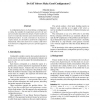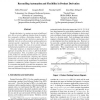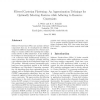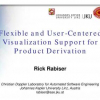SPLC
2008
14 years 28 days ago
2008
A configuration process is about finding a configuration, a setting, that satisfies the requirements given by the user and constraints imposed by the domain. Feature models are us...
SPLC
2008
14 years 28 days ago
2008
Dynamic Software Product Line (DSPL) engineering has proved itself as an efficient way to deal with run-time product adaptation. DSPLs have been successfully applied in domains su...
SPLC
2008
14 years 28 days ago
2008
The adoption of Domain-Specific Modeling Languages (DSMLs) for generating framework-based applications has proved to be an effective way of enforcing the correct use of frameworks...
SPLC
2008
14 years 28 days ago
2008
Product derivation, i.e. reusing core assets to build products, did not receive sufficient attention from the productline community, yielding a frustrating situation. On the one h...
SPLC
2008
14 years 28 days ago
2008
Software Product-lines (SPLs) use modular software components that can be reconfigured into different variants for different requirements sets. Feature modeling is a common method...
SPLC
2008
14 years 28 days ago
2008
In order to contribute to the understanding of how the SPL community and the open source community can benefit from each other, we present the Linux Kernel Configurator (LKC). We ...
SPLC
2008
14 years 28 days ago
2008
The automated analysis of Feature Models (FMs) focuses on the usage of different logic paradigms and solvers to implement a number of analysis operations on FMs. The implementatio...
SPLC
2008
14 years 28 days ago
2008
Model-driven software product lines are an emerging topic in research and industry, as they promise higher development speed and easier adaptability to customer needs. The generat...
SPLC
2008
14 years 28 days ago
2008
SPLC
2008
14 years 28 days ago
2008
Feature models are widely used to model software product-line (SPL) variability. SPL variants are configured by selecting feature sets that satisfy feature model constraints. Conf...




